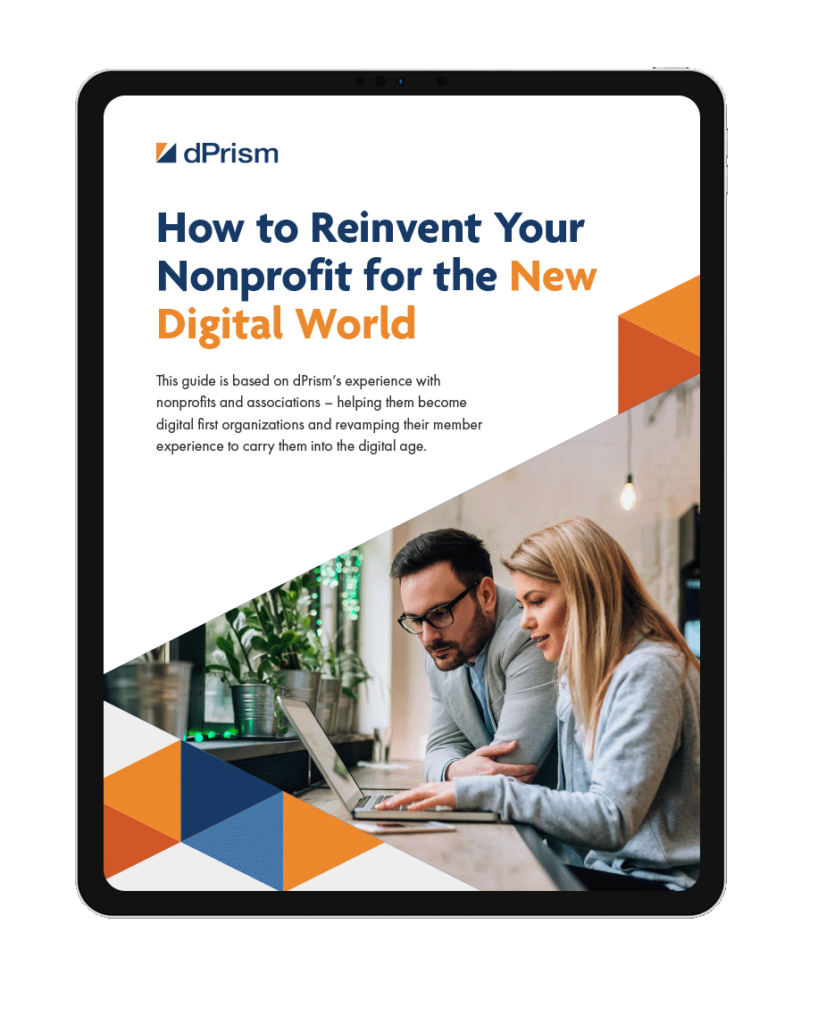Looking to improve the work culture in your nonprofit organization? Consider the following challenge by starting here:
Go to the website of any nonprofit, including your own, and look at the home page. Chances are, it only takes 90 seconds to tell just how motivated, happy and engaged the staff is!
Watch out for things like:
- Is the navigation a laundry list of disconnected products and services — or is it designed to help users accomplish specific tasks? (Hint: look for action words like “Learn,” “Discover” or “Donate.”)
- Are users invited not just to “Join” as a member of the organization, but also to register — regardless of their member status — to receive valuable content, attend an event, or get a more personalized experience?
- Is the mission of the organization clear and compelling?
- Does the page make the nonprofit’s professional community look vibrant and alive, or sleepy and static?
This isn’t a critique of web design, but rather an exercise to imagine what’s going on under the hood. In our experience, organizations with the weakest, most fractured web experiences also tend to have the most-frustrated, least-motivated and least-engaged staff.
Why are these two loosely correlated?
The reason is simple: If your nonprofit’s current and prospective members are not being properly served on the outside, it’s likely that staff and stakeholders are not rowing together on the inside. This may signal a lack of awareness across the organization about who their users are, what they need and what the organization’s mission is all about.
When there’s a culture of innovation, belonging and change, you can see it in everything an organization presents to the world.
But how do you fix a culture that’s broken?
To be sure, there are plenty of external reasons for the staff of professional societies and trade associations to be experiencing low morale, especially these days.
Economic downturns (and pandemics) can affect funding and membership renewals, putting pressure on staffing levels and compensation.
And staff can feel disillusioned as rapid changes in technology, as we’ve written elsewhere, challenge their ability to deliver a compelling member value proposition.
Individual staff members cannot change the economic outlook, nor can they slow the pace of technological disruption. But they can be mobilized and empowered to help you transform your association or society into a data-driven, strategically aligned organization that is laser-focused on meeting the needs of members and other users of its products and services.
Managing your greatest assets
Leaders at all-staff gatherings and board meetings are fond of saying “our people are our greatest assets.” But how are those assets being leveraged?
To take a next step in the right direction, it’s important to understand the issues and remedies for each of these scenarios. Here are four problems we routinely see, along with remedy that will ultimately help you leverage your greatest assets – and build your nonprofit work culture.
1. Too many silos
Issue: Staff feel more loyalty and passion for the success of their own department and its particular products and services than the organization as a whole. There is no common language across the organization that describes the broader needs of the people it serves.
Remedy: This issue is common and fundamental. Nonprofit staff tend to grow fond of their legacy products and services, and forget those offerings are only as valuable as the extent to which they meet current user needs.
- Have users’ needs changed? If so, how?
- And are offerings from the past still the best way to address those needs?
Engage in an organization-wide effort to speak directly to members and other customers, culminating in the development of overarching user needs and distinct user archetypes (also known as personas).
Then, once those user types and their needs are widely understood, urge staff to keep those needs — and not the preservation of current products and services — foremost in mind. Done properly, this exercise alone could transform your organization (not to mention your customer satisfaction).
2. Internal bias and data blind spots
Issue: Decision authority is closely held by managers who rely more on their experience and biases than on empirical data.
Remedy: Create a truly data-driven organization. Hunches based on experience are still valuable, but only after gathering and considering real-world facts that inform decision points.
Today there are widely available tools to collect data on users’ digital behaviors, transactions and preferences. But tools don’t operate by themselves. Rather than cutting staff out of the decision-making process, managers should empower their teams to determine what data to collect and how to collect and analyze it.
A manager’s main job, after all, is to help foster the success and motivation of the people they manage.
3. The need to tie individual roles to the greater mission
Issue: Staff cannot see how their jobs, or the products and services they support, fit in with the organization’s mission or strategic direction.
Remedy: If this doesn’t exist already, nonprofit leaders must work with their boards and senior leaders to create a multi-year strategic plan, and then build from it an annual operating plan that executes on the plan with specific, measurable objectives. There are many ways to do this, but we favor the “balanced scorecard” approach used by many Fortune 500 companies (and increasingly being used by nonprofits).
This approach ensures the organization considers all dimensions of success:
- Customer success
- Financial success
- The success of internal programs and the roadmap for building new capabilities.
As a next step, leaders should work with managers to determine how existing products and services must change to become better aligned with the strategic direction. There should be quantitative, data-driven success measures at the organizational level, the team level and at the level of every individual.
4. Fostering a sense of belonging
Issue: The organization may be trying to improve its diversity, equity and inclusion, but many staff continue to feel they don’t belong in the organization, or in their specific department.
Remedy: It is merely table stakes to make every effort to recruit staff from historically disadvantaged and marginalized communities and to make each team include more diverse voices. To make a real difference, managers must take the next step and work to foster a true sense of belonging for all team members.
Ask all staff, on a quarterly or at least a biannual basis, whether they personally feel a sense of belonging and how strongly they agree or disagree that the organization fosters that sense that everyone belongs. Then, leaders should act on the data in ways that improve the scores and help achieve their broader goals for diversity, equity and inclusion. It’s important to remember that all staff need to feel a sense of belonging, to know that their work matters and to understand how they are making unique contributions to the success of the organization.
Building your non-profit work culture on purpose
There is no better way to improve that sense of belonging than to recruit your entire staff in the effort to transform your organization into a strategically aligned, data-driven enterprise with a singular culture built around a passion for meeting the needs of your users.
We can help. Drop us a line and tell us about your organization’s challenges with staff culture. For a more strategic approach to association growth, check out our new executive guide: How to reinvent your nonprofit for the new digital world.
Sign up for the bi-weekly dBrief email:
Explore additional executive insights and guidance from our team of consultants, all of whom have decades of operational experience making exactly the kinds of decisions you now face, or browse the library of case studies.
Client Impact Story: Marketing Automation
Discover how Mod Op Strategic Consulting helped transform a leading law firm’s ability to produce and track its digital messaging and communication.
Client Impact Story: Improving Workflow Processes
Considering robotic process automation (RPA)? Review the process we used to introduce RPA to a leading financial publisher.

















